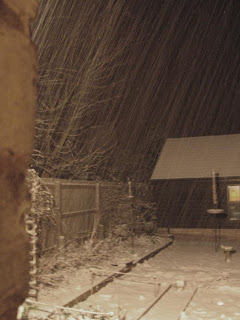 Eunny's Endpaper Mitts in Jamieson and Smith 2-ply shetland. Not the best colour choice to show the patterning, but the combination of heathered gold and purple is rich and warm, like some baroque brocade. Now that winter is just about over (it's positively warm in the sun out there today), why not knit mitts? Now, I could claim that I'm being sensible, that this means I'll be prepared for next winter, but I think this
Eunny's Endpaper Mitts in Jamieson and Smith 2-ply shetland. Not the best colour choice to show the patterning, but the combination of heathered gold and purple is rich and warm, like some baroque brocade. Now that winter is just about over (it's positively warm in the sun out there today), why not knit mitts? Now, I could claim that I'm being sensible, that this means I'll be prepared for next winter, but I think this calls my judgement into question. In case it's not obvious, that's both colours knitted from the same hand, with both mitts at the same time on a magic loop. Furthermore, that's my left hand on the left and my right hand on the right, and I took the photo all by myself. Teeth were involved.
calls my judgement into question. In case it's not obvious, that's both colours knitted from the same hand, with both mitts at the same time on a magic loop. Furthermore, that's my left hand on the left and my right hand on the right, and I took the photo all by myself. Teeth were involved.And if that weren't enough, this morning I joined the Grammar Police. Officially. On security camera. I had to stop in Tesco for milk. I don't normally shop there, I abhor the way the company treats both its suppliers and lower-echelon staff. As I walked down one of the frozen foods aisles, milk in hand, my eye was caught by three matching professionally-printed posters. Neatly arrayed side by side on three cabinet doors, they read
'Looking for
Yorkshire
Pud'z?
There behind
you!'
The security camera will show me frozen (ha) for several seconds before those words. I hope it catches the look of disbelieving horror that must have passed over my face. I then turn and walk away, more and more slowly, until I stop. I look back, I start to walk back. I stop, I walk away again, slowing, until I stop and dig frantically in my bag for a pen, any pen. I walk briskly back, correct the errors, and walk away again, at peace with myself. It felt good, it really did. I will do it again. I must carry an indelible felt pen in future.
Perhaps it's because I'm still knitting the Alligator Socks. Is there a rule that says 'The more you dislike a yarn, the longer any project using it will last?'





















